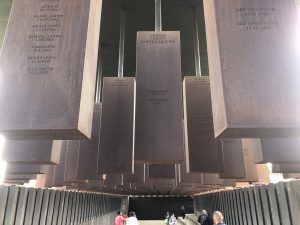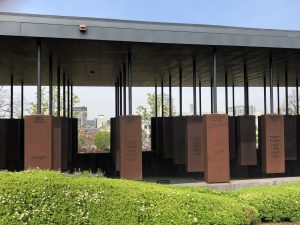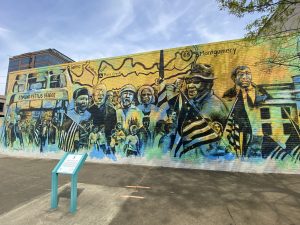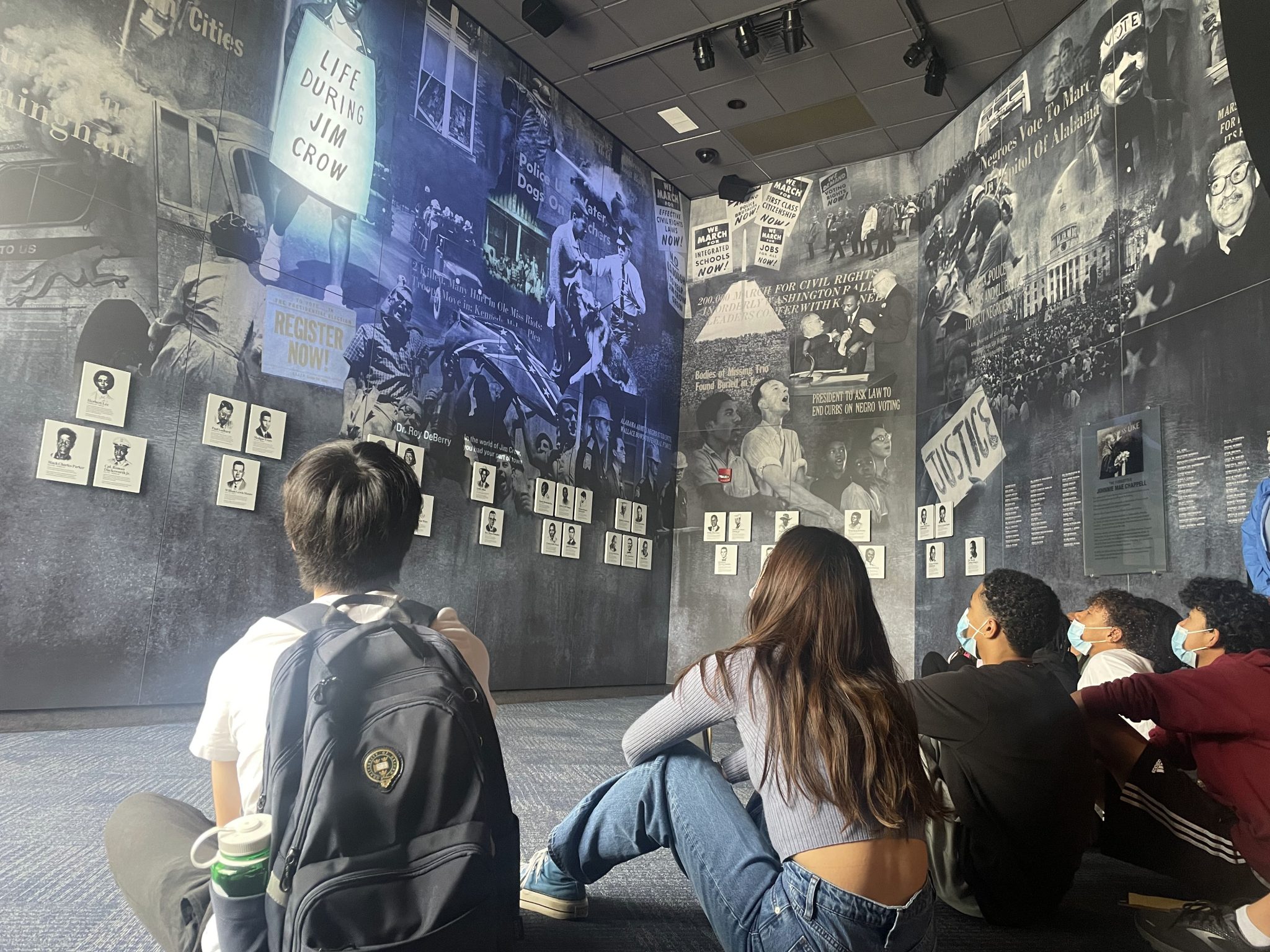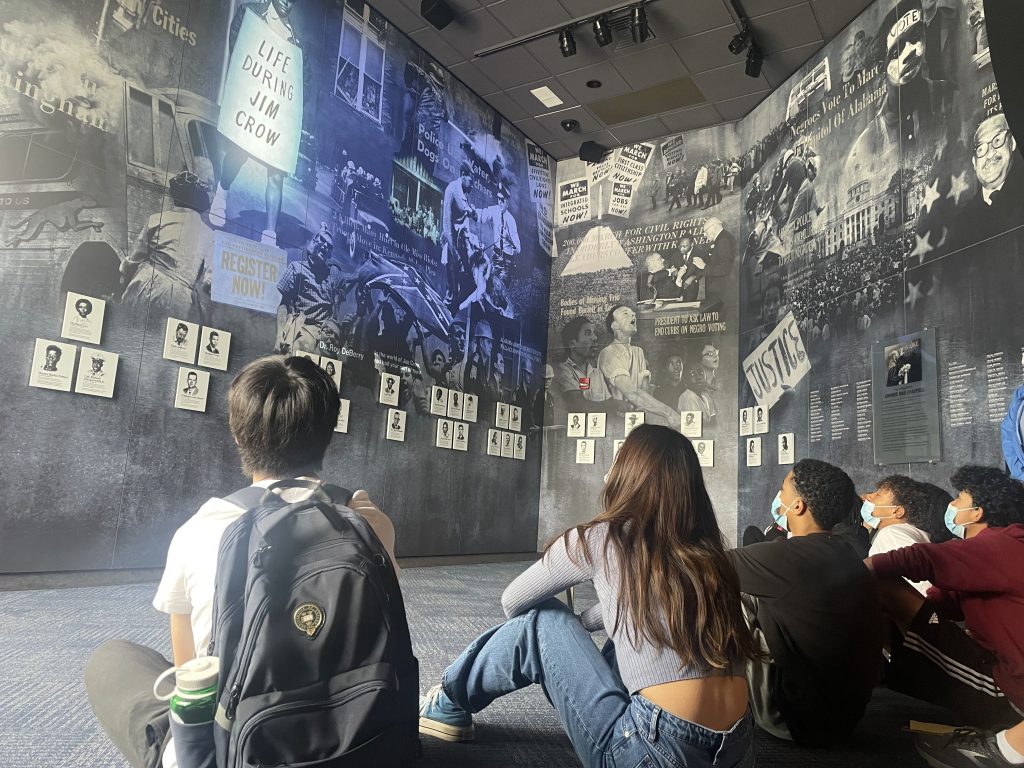Miu Yatsuka ’24, considers a new perspective on America’s criminal justice system.
My experience today in Montgomery was extremely formative in shaping the way I viewed American history. We visited the Legacy Museum that narrates the evolution of slavery in chronological order with a focus on first-person narratives through the presentation of primary sources with real graphics and real quotes. The exhibit opens with an immersive visual of the Atlantic Ocean, the “burial site for two million victims of enslavement”, as viewers are transported back to where it all began—the Transatlantic slave trade. I walked through Nkyinkyim, an installation created by Ghanaian artist Kwame Akoto-Bamfo. Concrete moldings of the heads of enslaved people stared back in agony as the waves washed over them. The sounds of the water gradually vanished, and I entered the beginning of the Domestic Slave trade, the start of what became to be America’s slave society. A map of Montgomery covered one of the walls, marking the streets we had previously walked with what it once was — slave depots, slave auctions sites, banks financing slavery and cotton businesses. I then walked through a series of cages, inside stood holograms of enslaved people reenacted. Cries of music filled my ears as I watched the recording of an enslaved person singing, their eyes glued on an inscription that read “Lord, how come we here?”
What started as indentured servitude evolved into a racial hierarchy of Black inferiority that was repeatedly used to justify slavery. This ideology being the only explanation for the absolute lack of humanity shown by the White race, I could only translate the darkness I felt with questions. How can one develop so much hatred toward a race enough to drive them to commit acts of extreme violence toward innocent strangers? How do Black people continue to find the strength to believe in the humanity of the future when they had been shown none in the past? The Black community has always been neglected in this society, and yet they have been able to overcome the violence of separation in unity, and never fail to show up. Perhaps it was this undying spirit that made the complete despair articulated through the letters written by innocent lives on death row so heart wrenching. My chest felt heavy as I read through the letters, some expressing immense guilt for the damage they had caused their families, while others contained illustrations by innocent young children facing capital punishment. Just Mercy had just been a book when I first picked it up freshman year, but to see the current injustices in context of the long history of slavery, it felt as though from the early ages of slavery till now, Black Americans have always remained behind bars. Why does this country’s Congress keep turning their back on its citizens? For it is not just their inaction that creates this reality, but the intentional addition of words such as “except” in the 13th amendment that has the power to cause this mass incarceration of millions.
My experience at the Legacy Museum was not just about understanding slavery, for it also instilled in me a sense of urgency as it brought to light the complete corruption of America’s criminal justice system. Does this system deserve to kill? How many more innocent lives must it take for this country to finally restore its humanity? It is truly scary to think that much of this knowledge would have remained a mystery if not for this visit, and I would have continued to live in America in complete ignorance.

